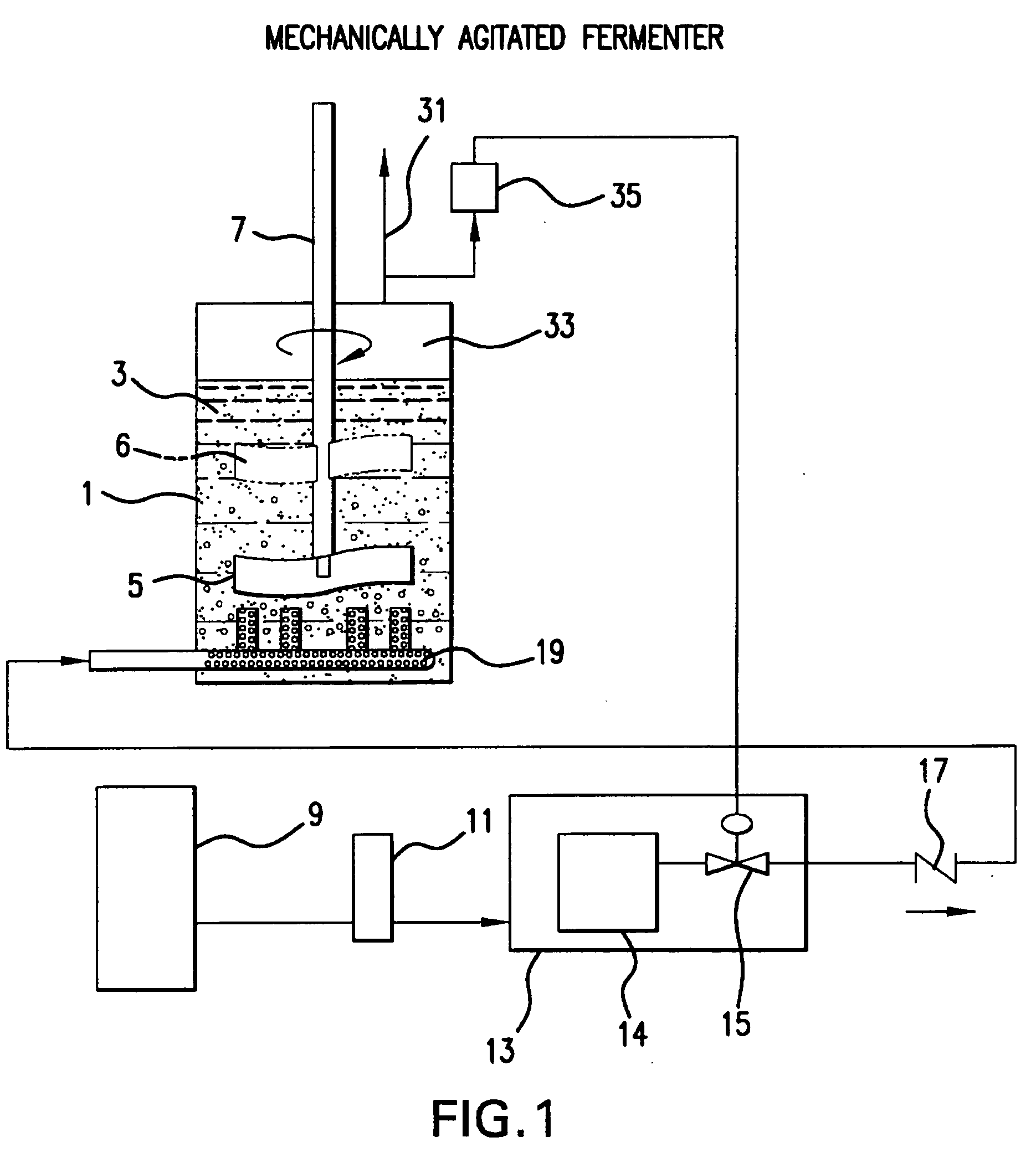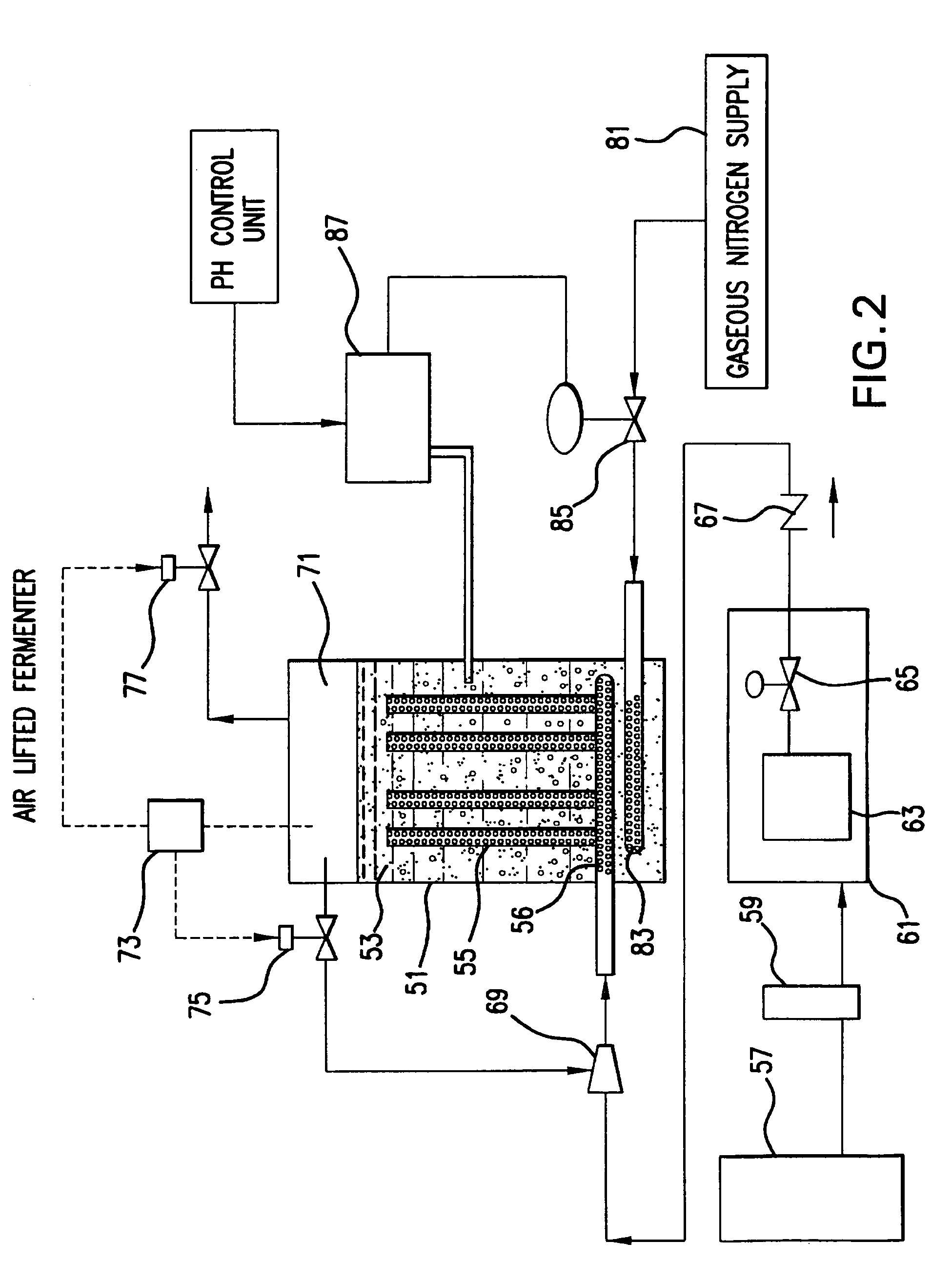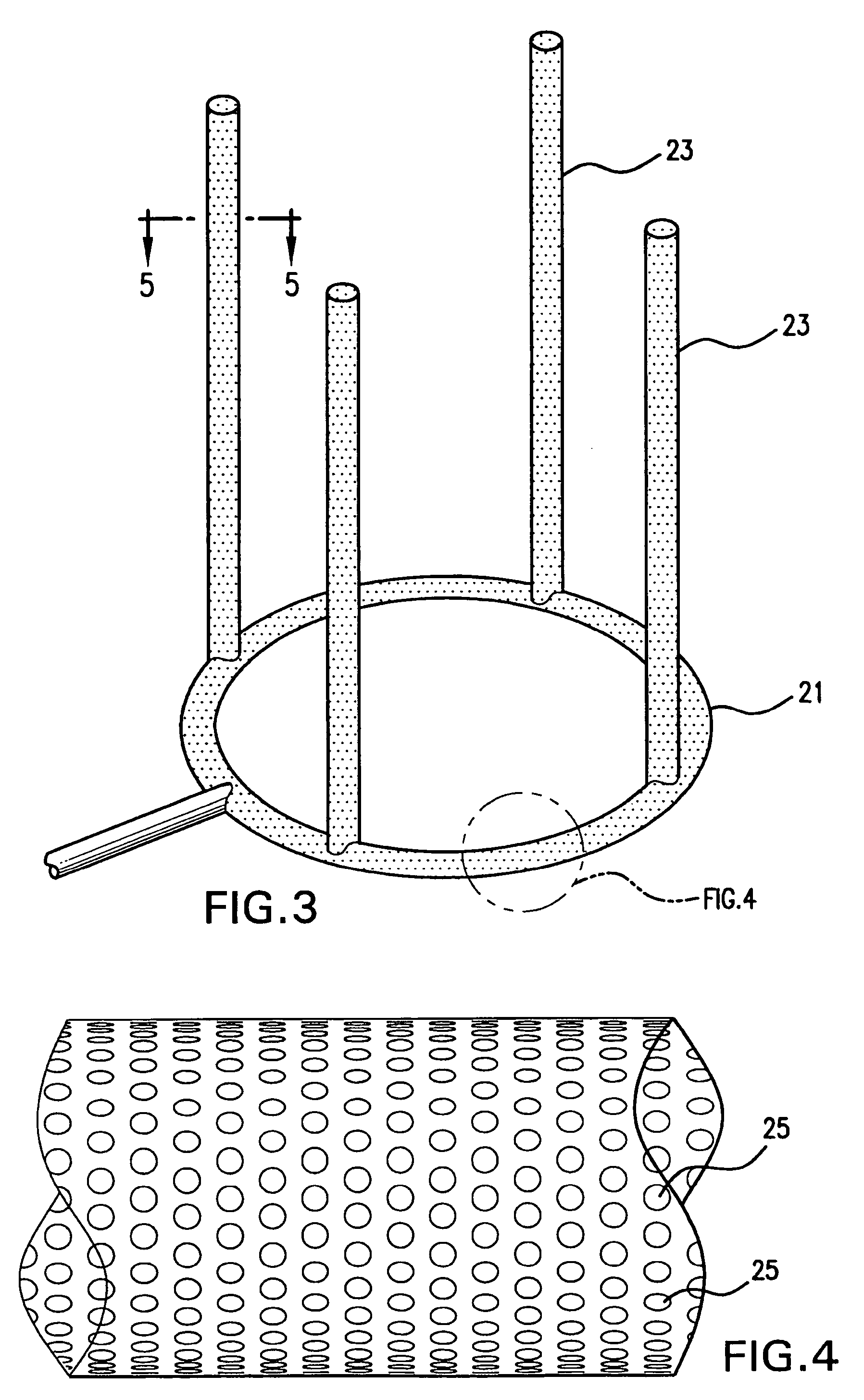Oxygen-assisted fermentation process
a technology of assisted fermentation and oxygen, applied in the field of fermentation processes, can solve the problems of difficult to obtain even the minimum desired level of dissolved oxygen, difficult to meet the requirements of a minimum of dissolved oxygen, and insufficient oxygen supply, etc., and achieve the effect of greatly reducing the risks of pure oxygen us
- Summary
- Abstract
- Description
- Claims
- Application Information
AI Technical Summary
Benefits of technology
Problems solved by technology
Method used
Image
Examples
Embodiment Construction
[0035] The present invention is based on the discovery that the use of pure oxygen, injected into a fermentation vessel by a proper injection technique, significantly improves the oxygen utilization of the fermentation process, while maintaining a high level of safety. The direct injection of oxygen provides for safe, controlled dissolution of high-purity oxygen in the fermenter. In the present invention, the stream of pure oxygen is the only reactive gas, from an external source, that is injected into the vessel.
[0036] For a typical fermentation cycle, oxygen demand is relatively low at the beginning of the process. After a certain lag time, the growth of microorganisms becomes exponential, and the oxygen demand increases rapidly. Direct injection of oxygen at this point permits a significant increase in oxygen dissolution in the fermentation medium, and avoids oxygen starvation, and enhances the efficiency of the process. When pure oxygen is dissolved in the medium, the concentra...
PUM
| Property | Measurement | Unit |
|---|---|---|
| pressure | aaaaa | aaaaa |
| concentration | aaaaa | aaaaa |
| chemical change | aaaaa | aaaaa |
Abstract
Description
Claims
Application Information
 Login to View More
Login to View More - R&D
- Intellectual Property
- Life Sciences
- Materials
- Tech Scout
- Unparalleled Data Quality
- Higher Quality Content
- 60% Fewer Hallucinations
Browse by: Latest US Patents, China's latest patents, Technical Efficacy Thesaurus, Application Domain, Technology Topic, Popular Technical Reports.
© 2025 PatSnap. All rights reserved.Legal|Privacy policy|Modern Slavery Act Transparency Statement|Sitemap|About US| Contact US: help@patsnap.com



